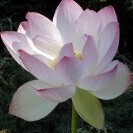-
Posts
791 -
Joined
-
Days Won
1
Content Type
Profiles
Forums
Events
Store
Downloads
Gallery
Everything posted by Franco D
-

Possible nihonto identification
Franco D replied to Muaythaimals's topic in General Nihonto Related Discussion
Please take the time to read the numerous sword care posts with links on this website. Beware that many sword kits come with uchiko. Uchiko can and will leave scratches (hike) behind. I've been purchasing and using sword oil from Bushido swords in Hawaii for decades without issue. It appears that the nakago on this sword may have been cleaned at some point adding to the challenge of correctly dating this sword. Regards -
Hello Geraint, Agree. My reply is simply trying to present things to consider especially for a beginner from a collectors perspective. I've said it before and I'll say it again. Buy what you like, but know (understand) what you're buying! Cheers
-
Ciao, 1. This is not a matter of there being something wrong here for me personally or otherwise. It is more a matter of evaluating this sword, any sword, from the perspective of meeting the criteria and standards for an upper level sword in this category. If one is going to spend good money on buying a Japanese sword, shouldn't that sword be in fact evaluated from the basis of what makes that sword a "collectible nihonto." At the very least one should buy a sword fully understanding what they are buying. 2. There are many Japanese swords for sale. Just as the quality of the sword needs to be considered in the price of the sword. The quality of the polish should weigh in. 3. This sword appears to have muneyaki. If this sword does in fact have muneyaki, the muneyaki should be carefully evaluated. Why, because the presence of muneyaki can say a lot about the quality of a sword. Muneyaki can range from being poor to excellent. The difference matters. p.s Books, read, study, study, study. Auguri
-
1. Shinshinto swords should be signed and dated with no flaws. 2. No mention of muneyaki. 3. Is this sword supposed to be in new polish? Auguri
-

Juyo Koto by the numbers. (Sort of)
Franco D replied to Mushin's topic in General Nihonto Related Discussion
Some very big names missing and that's after a quick glance. -

Reasonably priced Naginata
Franco D replied to Alex A's topic in Auctions and Online Sales or Sellers
Come on now. How about a more educational angled discussion than argument. What's good about this sword? (Besides the price) What's bad about it? This naginata was most likely a woman's weapon based upon curvature and length to be used for self and home protection. It is ubu and signed. It passed shinsa. While the polish is nothing to write home about, it is good enough for study. The value of the shirasaya alone cuts the price of the blade down to about thousand dollars. Is this an art sword, no. It was made to be a weapon first and foremost, and that's all it was ever meant to be. So, whether you buy it or don't buy it, buy it for what it is and not for what it is not. That's simply nonsense. How many Juyo blades are out there that were made by lower than Jo saku ranked smiths? Jussi? Anybody? Regards -
Time period? Smith rating? How many Juyo + by the smith? Historical background? Sharpness rating? Tradition? Mainline (Yamato, Bizen, Yamashiro, Soshu, Mino) ? School? Smith? Den? Signed? Dated? Ubu? Shortened? Reshaped? Machi o-kuri? Polish? Flaws? Kantei: Does everyone agree about who made this sword and on the quality? Is this sword an example of the smith's best work? How do you know? How many swords by the smith have you seen/studied? Koshirae? Quality? Homework. Buy what you like, but know what you're buying. Regards
-
In general, the better Japanese sword "books" do increase in price over time and become more difficult to find. I see the NCJSC no longer offers Yamanaka's Newsletters revised, too bad. Still, I would contact them and inquire. Yamanaka's should be in every serious collector's library. Place a wanted add here on NMB. Additionally, subscribe to Japanese sword dealers that carry books. Let these dealers know what it is that you're looking for. https://www.Japanese...index.com/sites2.htm Search the internet occasionally - https://search.yahoo...a+(AFU)+Koto+volumes Regards
-

Recommendations for koshirae
Franco D replied to Avidmark's topic in General Nihonto Related Discussion
https://search.yahoo...0&p=Brian+Tschernega -

Recommendations for koshirae
Franco D replied to Avidmark's topic in General Nihonto Related Discussion
Brian Tschernega would top the list of artisans I would turn to first for such a project. Recommend holding off on purchasing fittings before consulting with whomever you choose to go with. Lots of luck. Regards Desire is the cause of suffering. -
My first experience with nihonto came when I attended a gun show in search of an iai blade for practice. Fortunately, or unfortunately, depending upon the perspective, I came across a Japanese Sword Study Group table where it quickly became evident that I had no idea of what a nihonto was or what I was doing. On the fortunate side of things this short overly enthusiastic Chinese man behind the table talked me into buying my first book (The Japanese Sword, by Sato), and then talked me into attending the sword study meeting that evening. A kantei venue where I got to see five quality swords in full polish. That was it, there was no going back, study, study, study, to make a long story short. Train your own eye, begin to learn the knowledge for yourself. It will be challenging every step of the way. The path becomes smoother and less intimidating with practice. Regards
-
Take this as a lesson of how much there is still ahead of you to learn. Try not to repeat the same lesson/s. If serious about collecting and study of nihonto join a study group, attend shows, build a library. Even the most experienced nihonto collectors will make mistakes. It's never easy. Regards "Don't mistake temptation for opportunity" "Desire is the cause of suffering"
-
After more than 30 years of collecting nihonto I find myself still wondering how to collect tsuba, too. A place to begin ... https://shibuiswords.com/ Regards
-

Help with a translation on a WW2 sword.
Franco D replied to Bill K's topic in Translation Assistance
Please read the many posts about how to properly clean swords if you haven't already. You can find them using the search feature on this website. Regards -

Kanenobu. Signed Noshu ju Kanenobu.
Franco D replied to Swords's topic in General Nihonto Related Discussion
Flaws within the hamon should be considered there to stay. Regards -
https://www.Japanese-swords.com/
-
Enjoy it as is and leave a note for the next caretaker. Regards
-
When a sword has been damaged, such as a broken tip as is the case here, should it be decided to restore such a blade it is important to find a polisher with excellent foundation polishing skills and ability. As the entire area that makes up the kissaki will have to be reshaped. Anything less will be spotted by a good eye searching for a collectible sword such as this one in the future. Regards
-
Yes, in plain English, unless someone fully understands what it is that they are looking at, even in hand, a big budget could result in only making a more expensive mistake. Yes, this applies shopping at the Juyo level too. When it comes to nihonto what you don't know is often more important than what you think you know. When Japanese say that kantei is the foundation for nihonto appreciation, do you understand and know what that means? Regards
-
It often works out that the Japanese sword one collects regardless of budget ends up in some way reflecting the level of knowledge of that collector. That may be, at least in part, what is meant when you hear the adage of "it's the sword that finds the owner." Regards
-

Which WAKIZASHI/Which katana to pick
Franco D replied to Ronald Aguirre's topic in General Nihonto Related Discussion
Unless a sword be it katana or wakizashi meets or exceeds NBTHK Tokubetsu Hozon standards/requirements it becomes difficult to justify restoration, imho. This doesn't necessarily mean that a Hozon level sword is not worthy of restoration. It just means, in either case, the sword had better be a pretty darn good sword to begin with (meaning excellent work by a highly rated smith). Collecting nihonto requires hours and hours of study and experience, especially when it comes to old mumei swords. And even then there may be disappointment. So, here's a place to begin, lots of luck ... https://nihontocraft...hinsa_Standards.html Regards





